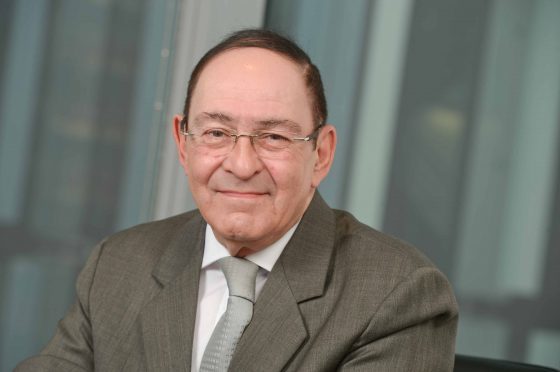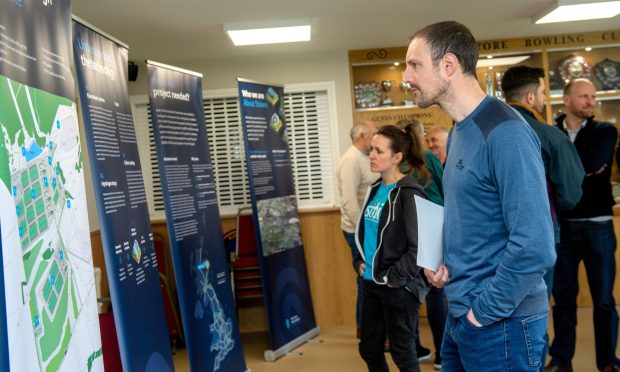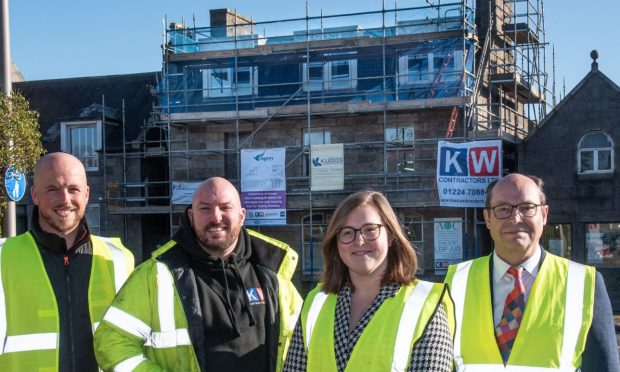Aberdeen is in the grip of transformation and nowhere is that more evident than the city centre – where radical changes have been planned to stave off decline.
As part of a £1 billion masterplan, devised in the shadow of the oil and gas downturn and dwindling footfall figures, the council has pedestrianised Broad Street, approved new housing, erected towering office blocks and unveiled a vision to overhaul Queen Street.
Meanwhile, Schoolhill is currently a hive of activity with improvements being carried out ahead of the long-awaited reopening of Aberdeen Art Gallery and work is poised to begin on the equally anticipated revamp of Union Terrace Gardens.
And council chiefs have now been urged to progress their wider goals for regeneration – by the civic leaders of the English city which they hope to emulate.
In mapping out a prosperous future for the city centre through the ambitious 25-year masterplan, local authority leaders took inspiration from the transformation of Manchester.
The English city’s image has changed from one of dirty canals and abandoned factories to a modern tourist mecca of towering skyscrapers, world-leading attractions and designer shops.
The brains behind Manchester’s overhaul spoke to the P&J about the local efforts, and agreed that Aberdeen City Council must not stall or delay its grander ambitions.
Sir Howard Bernstein was chief executive of Manchester City Council from 1998 to 2017 and has been widely credited as one of the leading figures behind the reinvention of the Capital of the North.
He said: “Regeneration is a long-running process and the ambition should not be dropped.
“If a plan is credible and works then people have to stick with it.
“Big cities never really stop growing so that means there is more demand for infrastructure and, if that isn’t delivered, you run the risk of slowing down the process of growth.”
Sir Richard Leese has been leader of Manchester City Council since 1996, and encouraged his counterparts north of the border to press ahead with their ambitions.
He said: “We have seen that having a plan gives a higher level of development.
“If you stop investing in the economy, you can create a cycle of dereliction and lose business confidence.”
Aberdeen has not been the only city to take influence from Manchester, as the regeneration of its city centre has been commended as a prime example of how such projects should be carried out.
Marie Boulton, Aberdeen City Council’s culture spokeswoman, went on a fact-finding mission to England’s third largest city in 2016.
And co-leader of the local authority, Jenny Laing, has a longstanding connection with the north of England.
Her father James Lamond served as an MP for Oldham East from 1970 to 1983, and for Oldham Central and Royton from 1983 until he retired at the 1992 general election.
She said that the main catalyst for change was the downturn in the oil and gas industry.
Mrs Laing said: “I think the spotlight fell on Manchester because of the work done there on regenerating the city centre.
“We saw that we needed to attract people to live and work in the city, we found a lot of people would do their studies here and leave.
“We have concentrated a lot on making Aberdeen a cultural draw, but also on improving digital and transport infrastructure.
“As finances get tight, the easiest thing to do is scrap projects.
“But what I think we have been doing over the last seven years shows the strength of our strategy.
“The next 40 years will be as important for change in our city as the past 40 years.”
Her fellow co-leader, Douglas Lumsden, added: “We have to keep our foot on the accelerator.
“We have just been through a very difficult budget process but we have take very seriously our commitment to the city centre.”
There are various plans afoot to breathe new life into the heart of the city by turning disused buildings into housing.
And the recent opening of P&J Live at Bucksburn is expected to have a knock-on effect on the city as a whole, with thousands of concert-goers sampling the centre while visiting to take in shows.
The next phase of the masterplan is the transformation of Queen Street, with it becoming a new quarter of shops, leisure and public space with homes for retirees and young families among the key offerings.
But critics have questioned Aberdeen’s regeneration vision – pointing to landmark projects which have suffered delays and ended up costing more than anticipated.
SNP group leader Stephen Flynn said: “All councillors supported the concept of the masterplan because we wanted to change our city centre for the better – but we have been clear from the outset that we would judge each project on its own merit in the hope that they would deliver positive change in an affordable manner.
“Sadly, on this most basic of points, the administration has been found wanting.
“The reality is that we have rightly seen headline projects opposed by the public before subsequently being plagued by lengthy delays and huge overspends.
“If you are to achieve positive change then you need to take the public with you and I just don’t believe the administration has achieved that.”










